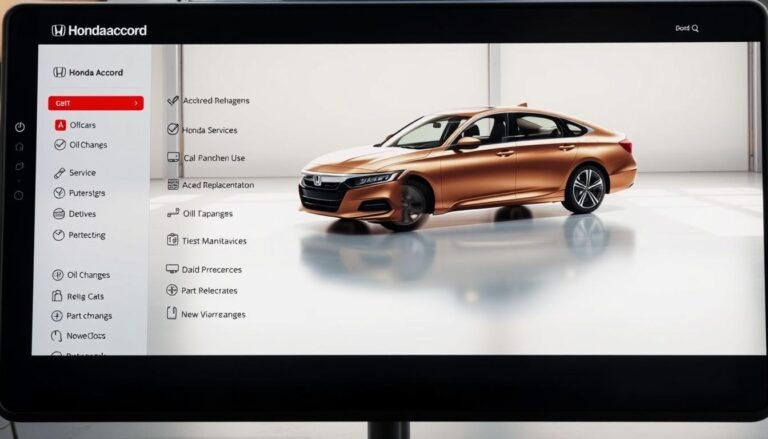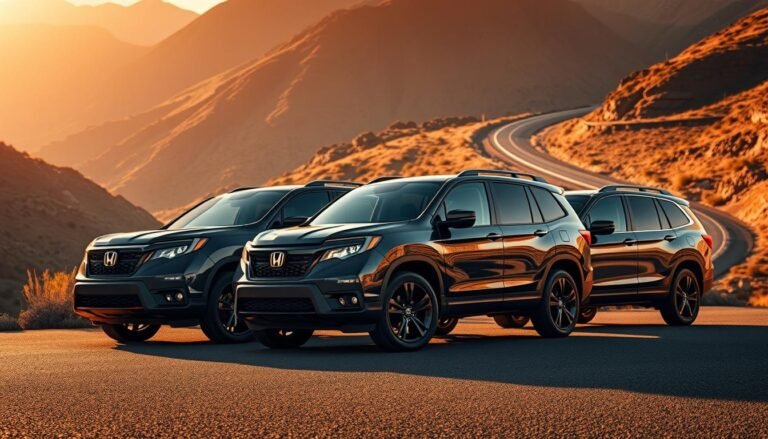Is Honda A Foreign Car? Knowing Better 9 Origin & Brand
Is Honda a foreign car? This question is not simple to answer. Honda was born in Japan, making it technically a foreign brand.
However, its strong role in the U.S. car market complicates things. For those who love their Honda Accords or Civics, knowing the company’s history adds value.
In this article, we’re going to learn about where Honda comes from, how it makes cars worldwide, and its position among U.S. cars.
We will look at Honda’s factories all over the planet and its past. We’ll also compare Honda to American car makers.
By discovering Honda’s roots and how it makes cars, you’ll better understand if it’s seen as a foreign brand. Let’s dive into Honda’s journey and see what sets it apart in the car world.
Introduction To Honda
Honda Motor Co., Ltd. started back in Hamamatsu, Japan, in October 1946. Now, it’s a top global automotive maker.
Honda is known for always bringing new ideas to the table and making sure its products are top-notch.
The honda story is filled with a wide range of products, from cars to motorcycles, to power tools. A big moment was when they launched the Acura brand in 1986.
This move put them into the luxury car market. Honda has built a name for itself by making vehicles that everyone can rely on, no matter what they’re looking for.
Honda’s Global Presence
Honda has built a significant presence worldwide, with many manufacturing plants. It is very successful in the United States.
Being placed strategically lets Honda meet the needs of local markets while using its international knowledge.
Manufacturing Plants Worldwide
Honda has set up a network of factories across the globe. This shows its pledge to make vehicles near important markets.
It has big plants in the U.S., Japan, and many places in Europe and Asia. The spread of honda plants worldwide cuts transport costs and increases efficiency.
https://www.youtube.com/watch?v=6nfgP4Gzr-I
Sales and Market Share in the U.S.
Honda has a strong share in the U.S. car market. Recent data shows it’s among the top car sellers in the United States. About 89% of Hondas and Acuras sold in the U.S. are made in North America.
This shows Honda’s commitment to the American market and boosts its strong honda market share USA.
Honda’s Origins and History
Soichiro Honda founded Honda in 1946. It was a key moment in car and motorcycle making. We see how this small company became a global giant by looking at Honda’s history.
Early on, innovation and a focus on quality marked Honda’s path. This laid the groundwork for their future wins.
Founding of Honda Motor Co., Ltd.
Soichiro Honda had a vision when he started Honda Motor Co., Ltd. He aimed to make motorcycles. This met the rising need for personal transport in post-war Japan.
With its efficient, reliable bikes, Honda quickly became known. It secured its spot as a major name in the motorcycle world.
Early Innovations and Growth
Honda’s early work brought big changes to car technology. The Honda T360 mini truck showed off Honda’s engineering skills. Then came the S500 sports car.
It showed Honda’s desire to go beyond bikes. These vehicles helped make Honda known for innovation. They laid the groundwork for Honda’s rise in the car industry.
| Year | Vehicle | Significance |
|---|---|---|
| 1949 | Honda T360 | First mini truck, marking Honda’s entry into the four-wheeled vehicle market |
| 1963 | Honda S500 | First sports car, showcasing Honda’s innovative engineering and design |
| 1964 | First production motorcycle | Established a strong reputation in motorcycle manufacturing |
Is Honda A Foreign Car? Understanding the Definition
To know if Honda is a foreign car, we need to grasp what “foreign” and “domestic” mean in cars.
The answer depends on who owns the company, where the cars are made, and the brand’s image. Who owns Honda is key to this discussion.
Even though it’s a Japanese brand, many of its cars are made in the U.S. This fact makes some wonder if Honda really is a foreign car brand.
Where Hondas are made is also vital. Honda has plants in the U.S., which complicates things.
A car built in the U.S. might be called “domestic,” even if its brand is from another country. So, is Honda domestic or foreign? It really depends on how you look at it.
| Criteria | Honda |
|---|---|
| Ownership | Japanese |
| Primary Manufacturing Locations | United States and Japan |
| Percentage of U.S. Made Models | Approximately 70% |
| Classification | Often considered both foreign and domestic |
In short, figuring out if Honda is foreign or domestic involves looking at its roots and where it builds cars. People see things differently, leading to debates about Honda’s real status.

Where is Honda Manufactured?
Honda cars are made in key spots across the globe. In the United States, there are several plants where Honda vehicles are built.
They have special assembly lines that make the production smooth and fast. This part talks about where Honda makes its vehicles and their assembly line processes.
Key Manufacturing Locations
- Honda Manufacturing of Alabama – Located in Lincoln, Alabama, this facility produces several models, including the Honda Odyssey and Honda Pilot.
- Honda of America Manufacturing – Situated in Marysville, Ohio, this plant is crucial in making the Honda Accord and Honda CR-V.
- Honda Manufacturing of Indiana – Located in Greensburg, Indiana, this facility assembles the Honda Civic and Honda HR-V.
Assembly Line Practices
Honda’s assembly lines are known for efficiency and quality. The company uses lean manufacturing to cut waste and boost productivity.
This means they’re really good at making cars without unnecessary steps, keeping up with what people want to buy. Honda’s factories regularly produce vehicles that are top-notch.
Honda’s Country of Origin
Honda’s story starts with its deep roots in Japan. It’s where the company gets its inspiration for design and engineering.
Soichiro Honda, the founder, aimed for innovation and top-quality, showcasing Japanese craftsmanship.
Japanese Roots and Cultural Influence
Honda started in 1948, just after World War II. This was a period when Japan wanted to rebuild and bring in new ideas.
That time led Honda to focus on being green and technologically ahead. They made cars that are fuel-efficient and kind to the environment, aligning with Japan’s love for nature.
The influence of Japan on Honda goes past its products. The company’s workplace values teamwork, respect, and always getting better.
These Japanese traditions help Honda innovate, from making new products to serving customers better.
Honda shows its cultural values in how it makes things. It uses Kaizen, a method for improving how things work and ensuring quality.
This approach doesn’t just make reliable products. It keeps Honda strong on the global stage, true to its roots. Seeing how Honda has grown shows why it stands out in the car world today.

Honda: Domestic or Foreign?
Is Honda a foreign or domestic brand? This question has many sides. Honda, originally from Japan, has strong roots there.
But, it also has a huge manufacturing presence in the United States. This plays a big role in seeing it as a domestic brand.
In the U.S., Honda runs many manufacturing plants. They make all kinds of vehicles here. So, many Hondas sold in the U.S. are actually made here.
This is a key point in the debate about whether Honda is domestic. Honda’s role in the U.S. isn’t just about where cars are made.
It’s also about jobs and helping local economies. The company employs a lot of American workers. This shows how Honda mixes its Japanese origins with local connections.
| Criteria | Honda as Foreign | Honda as Domestic |
|---|---|---|
| Headquarters | Japan | Multiple facilities across the U.S. |
| Employment Impact | Limited impact in U.S. job market | Thousands of American jobs created |
| Vehicle Production | Primarily produced in Japan | Significant production in the U.S. |
| Brand Awareness | Perceived as an import | Recognized as a U.S. manufacturer by many consumers |
Honda is seen both as foreign and domestic, which makes its identity complex. The ongoing debate about Honda’s identity is influenced by how it does business.
Also, how people perceive the brand keeps changing.
Honda Made in USA: The North American Perspective
Honda is deeply connected to its U.S. roots, showing us how American manufacturing shapes its identity.
With factories spread across North America, Honda doesn’t just make cars. It also boosts the economy by creating jobs and making investments.
Overview of U.S. Manufacturing Facilities
In the U.S., Honda’s manufacturing plants are a big deal. They make many models that Americans love to drive. These high-tech facilities help make Honda a top name in the U.S. car world.
- Major models produced in the U.S. include the Honda Accord, Civic, and CR-V.
- Investments in new technologies enhance production efficiency and sustainability.
- Honda north american factories employ thousands, fostering job growth in local communities.
- Collaborations with local suppliers bolster the automotive supply chain.
When you hear “honda made in usa,” it means more than just where the car is made. Choosing Honda supports American jobs and heritage.
You get quality and new ideas from a brand that values its American roots.

Comparison with Other Car Brands
When looking at Honda versus domestic brands like Ford and General Motors, a few key points stand out. These points impact why people choose one brand over another.
They are especially focused on where cars come from and how good they are thought to be. Honda knows where it stands among its competitors in the car world because of this.
Honda vs. Domestic Brands
Honda and domestic brands differ in many ways. Things like how reliable and innovative their cars are play a big role. These strengths help Honda stand out against American car makers.
| Brand | Reliability Rating | Market Share in the U.S. (%) | Average Price (USD) |
|---|---|---|---|
| Honda | 8.5/10 | 8.5 | 28,000 |
| Ford | 7.5/10 | 14.5 | 36,000 |
| General Motors | 7.0/10 | 17.0 | 34,000 |
Perceptions of Automotive Origins
Where a car is from really matters to shoppers in the U.S. Many people see Honda’s Japanese background as a sign of great engineering.
On the other hand, even though they are seen as creative, domestic brands might not always reach the same level of reliability and excellence as Honda.
Brand loyalty is also shaped by these views of where a car comes from. People might pick a car based on its country of origin or their own good experiences.
That’s why it’s so important to get these differences if you’re exploring the car market today.
Consumer Perspectives on Honda
Understanding how people see Honda gives us great insight into why they stay loyal to the brand. Many people choose Honda because they trust its safety, reliability, and new tech.
These factors make fans keep coming back to Honda. The emotional bond with Honda is also key in their choice.
Brand Loyalty and Identity
Honda is known for high quality and performance. Their cars get top marks from customers, which keeps folks loyal. Here are a few reasons why:
- High resale value
- Recognition for safety features
- Impressive fuel efficiency
- Wide range of models catering to various needs
Honda works hard to keep its customers happy with loyalty programs. These programs help strengthen the bond fans have with the brand.
The table below shows some important stats about Honda’s loyalty and identity:
| Aspect | Details |
|---|---|
| Customer Satisfaction Rating | 85% of Honda owners are happy with their cars. |
| Repeat Buyers | 65% of Honda buyers stick with the brand for their next car. |
| Brand Recognition | Honda is always in the top 10 for car brand value. |
| Safety Ratings | Many models get the highest safety ratings from the IIHS. |
By focusing on quality, safety, and loyalty, Honda keeps its strong position. This creates long-lasting loyalty that stands out in the car market.

Future of Honda in Global Markets
Honda is changing how it works to keep up with the car industry’s changes. Its plans for the future focus on being innovative and sustainable.
This will help it grow in global markets. The company is working on electric cars and making its factories more eco-friendly.
Strategic Plans For Growth and Innovation
Honda is investing a lot in electric cars. They see that people want cars that are better for the planet. So, they aim to cut down on harmful emissions.
They also plan to work with tech companies. This will help them make cars that can drive themselves and connect to the internet.
Here are the main parts of Honda’s plan:
- They want to have more electric cars with better batteries.
- They plan to work with others to improve how cars perform.
- They aim to make their factories greener to help the environment.
This strategy helps Honda meet strict environmental rules and what customers expect.
Knowing Honda’s future plans can help you pick cars that are both good to drive and good for the planet.
| Focus Area | Current Status | Future Goals |
|---|---|---|
| Electric Vehicles | Launching new models in key markets | Achieve 100% electric vehicle sales by 2040 |
| Sustainable Practices | Implementing recycling programs | Reduce overall carbon footprint by 50% by 2030 |
| Technological Partnerships | Collaborating with tech leaders | Enhance connected car technologies by 2025 |
Honda’s initiatives show its commitment to growing in global markets. They are focusing on innovation to tackle future challenges in the automotive field.
Conclusion
Honda stands out by blending both foreign and domestic traits. Born in Japan, its commitment to innovation highlights its foreign roots.
Yet, with extensive manufacturing in the U.S., it feels like a domestic brand too. This mix plays a big part in what Honda is all about.
This article has shown us Honda’s worldwide reach, its manufacturing methods, and how culture shapes how we see it.
Grasping these points helps us understand Honda’s complex reputation. This knowledge can guide your buying choices or make owning a Honda better for you.
Thinking about Honda’s varied role brings up new insights and confidence in their cars. Seeing Honda as both an international and local brand matters for buyers.
It’s not just about their long history or trustworthiness. It’s also about how Honda is changing the game today. This view can change how you see their cars.
FAQs
Q: Is Honda considered a foreign car in the U.S.?
A: Honda is a Japanese company but makes many cars in the U.S. This makes it both a foreign and a domestic brand.
Q: Where is Honda manufactured?
A: Honda builds cars in several places, like Ohio, Alabama, and Indiana. They also have plants in Japan and other nations.
Q: What percentage of Honda cars sold in the U.S. are made domestically?
A: In 2020, around 89% of Honda and Acura cars sold in the U.S. were made in North America. This shows strong domestic production.
Q: What is Honda’s country of origin?
A: Honda started in Japan in 1946, founded by Soichiro Honda.
Q: Does Honda have a luxury brand?
A: Yes, Honda launched Acura in 1986. Acura is its luxury car brand.
Q: Why do some people consider Honda a domestic brand?
A: Some see Honda as a U.S. brand because it manufactures a lot here. It also helps the economy a lot.
Q: How does Honda’s Japanese culture influence its cars?
A: Honda’s designs and engineering are influenced by its Japanese origins. They focus on new ideas, quality, and being efficient.
Q: What are Honda’s future plans in the automotive sector?
A: Honda aims to grow and innovate, focusing on electric cars and being eco-friendly. It’s their plan to stay competitive.







